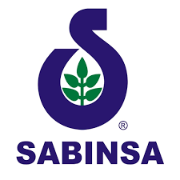News
What’s behind the rise of the turmeric trend?
23 Apr 2019Sales of turmeric have seen sharp growth over the past few years, with rising awareness backed by a growing range of delivery formats, including supplements, functional foods, beverages and cosmetics.
Interest in the spice has been rising for several years and surged at the start of 2017. But Google searches for turmeric reached a new high in January 2019, suggesting there still may be room for further growth. Turmeric has a long history of use in Indian Ayurveda, a system that has gained attention among westerners in recent years as they increasingly look to traditional medicines for health-boosting compounds.

Turmeric – or more accurately, the curcumin extracted from it – is thought to have anti-inflammatory and antioxidant effects, and some claim it could have wide-ranging benefits, including for digestive health, the skin, joints, liver, and nervous system. However, most turmeric products are marketed for non-specific effects on health. The terms ‘turmeric’ and ‘curcumin’ are often used interchangeably, but the curcumin and other curcuminoid compounds thought to be responsible for turmeric’s purported health benefits account for only about 3% of turmeric powder.
The spike in consumer interest coincided with a trend for turmeric lattes sold coffee shops, and while most European imports of turmeric are ground for culinary use, the supplements market is now the largest and fastest-growing segment of the curcuminoid market in the world. Among suppliers, the focus is often on purity, and most commercially available extracts are sold with a standardised curcuminoid content of 95%.
Some go a step further, aiming to improve bioavailability of the active components. Indena, for example, uses dietary phospholipids to increase absorption of its curcuminoid ingredient, while Sabinsa supplies an ingredient standardised to 95% tetrahydrocurcuminoids, the ultimate metabolites of curcuminoids in the body.
Meanwhile, Naturex is also playing up its expertise in natural colours to encourage manufacturers to use turmeric in food and drinks for its flavour as well as for its deep yellow colour. When it comes to health benefits, most would agree that supplements hold the most potential because they can deliver a far more concentrated dose of bioavailable curcuminoids. However, Naturex’s approach could extend the use of turmeric among health-conscious consumers, with potential in sports nutrition, drinks, and beauty-from-within products, especially as suppliers have developed water-soluble forms of the ingredient.
Social media also could prove to be a major driver for such products among image-conscious consumers looking to highlight trendy and attractive foods, beverages and cosmetics in their wellness routines.
In short, turmeric’s popularity shows no signs of slowing down as it taps into so many current trends, including interest in whole foods, traditional ingredients, food as medicine and Instagram-worthy foods and drinks.


